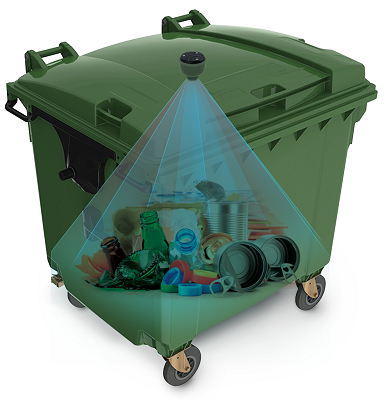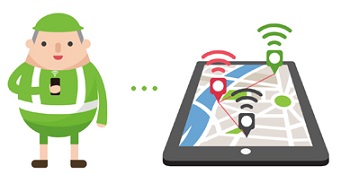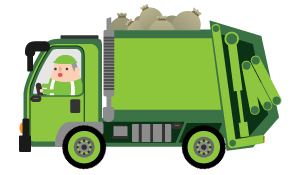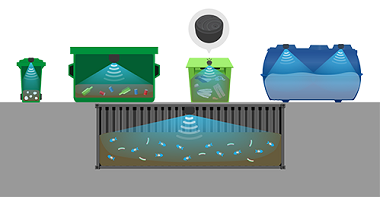 Over 50% of the world’s population now lives in cities, and the figure is set to rise to 75% by 2050. While the world’s cities only cover 2% of the global land area, they account for a staggering 70% of greenhouse-gas emissions and share the burden of responsibility for global climate change. These facts make the development of sustainable solutions for urban cities a requirement and place various demands on future cities. Some of the requirements include energy-saving and efficient street and traffic lighting, water and wastewater management, and the reduction of CO2 emissions from motor vehicles. Flagship cases where major achievements towards becoming smart cities have already been taken include Barcelona, Singapore, Stockholm, and Seoul.
Over 50% of the world’s population now lives in cities, and the figure is set to rise to 75% by 2050. While the world’s cities only cover 2% of the global land area, they account for a staggering 70% of greenhouse-gas emissions and share the burden of responsibility for global climate change. These facts make the development of sustainable solutions for urban cities a requirement and place various demands on future cities. Some of the requirements include energy-saving and efficient street and traffic lighting, water and wastewater management, and the reduction of CO2 emissions from motor vehicles. Flagship cases where major achievements towards becoming smart cities have already been taken include Barcelona, Singapore, Stockholm, and Seoul.
In Seoul, one of the key areas where innovative technologies have been utilized to tackle the global climate change is waste management. The South Korean capital had problems with high generation of waste, overflowing trash bins and littering, all of which led to frequent complaints from residents. To solve these problems, the city installed IoT based sensor devices to hundreds of waste containers around the city, enabling the city’s waste collection staff to monitor the fill-level of each trash bin remotely. The ultrasonic sensors detect any type of waste and transmit the collected data through wireless mobile networks to a smart waste management platform, which helps the operation managers to understand the optimal times for waste collections and even recommends the optimal collection routes.
The software platform visualizes the capacity of each trash bin in traffic light system: green color means that the waste container has still plenty of space, and red color gives a signal to the operation manager that collection is required. Besides assisting with the optimal collection routes, the software also predicts collection times by utilizing historical data.
What might sound unreal has already become reality in numerous smart waste management projects around the globe. But what exactly are the benefits of bin level sensors? Keep with us, because next, we are going to explain the top 5 reasons why every city should install smart sensors to their trash bins.
Bin level sensors enable smart, data-driven decisions
 Traditionally waste collections have been inefficient, targeting each and every trash bin without really knowing if the bins were full or empty. Checking the waste containers regularly might have also been difficult due to remote locations or difficult access.
Traditionally waste collections have been inefficient, targeting each and every trash bin without really knowing if the bins were full or empty. Checking the waste containers regularly might have also been difficult due to remote locations or difficult access.
Bin level sensors provide users the capability of knowing the fill-level of each waste container in real time so that they can take data-driven actions ahead of time. Along with a live monitoring platform, waste collection staff can plan ahead how collections are implemented, targeting only the locations of full trash bins.
Trash bin sensors reduce CO2 emissions and pollution
 Currently, collecting garbage is a very pollutant heavy proposition. It requires an army of sanitation drivers who operate fleets of trucks that get poor mileage and spew emissions. Characteristically waste collection services have been inefficient because this enables the collection companies to turnover more profit.
Currently, collecting garbage is a very pollutant heavy proposition. It requires an army of sanitation drivers who operate fleets of trucks that get poor mileage and spew emissions. Characteristically waste collection services have been inefficient because this enables the collection companies to turnover more profit.
Ultrasonic bin level sensors offer the means to have fewer trucks on the road for less time, which means less fuel consumption and less greenhouse gas emissions. Fewer trucks cluttering up the roads also mean less noise, less air pollution, and less road wear.
Garbage level sensors reduce operational costs
Managing waste can take a huge bite of the municipal budget. For cities in less affluent countries, trash collection often represents the largest single budgetary item. Moreover, the global cost of managing garbage is increasing, most severely affecting cities in low-income countries. It is often coupled with an even greater dilemma of shrinking budgets with its citizens demanding the same or better municipal services.
Bin fill-level sensors provide remedies for the budget concerns by reducing waste collection costs by up to 50% when used together with a fill-level monitoring platform. This is possible because fewer collections mean less money spent on driver hours, fuel and truck maintenance.
Bin sensors help cities eliminate overflowing trash bins
 Without an efficient method of trash collection, at its worst, the growing public is exposed to the breeding ground of bacteria, insect, and vermin due to accumulated trash, which also promotes the spread of air and water-borne diseases. And at the minimum, it is a public nuisance and eyesore especially for those metropolitan areas that are heavily dependent on tourism to generate revenues to municipals service.
Without an efficient method of trash collection, at its worst, the growing public is exposed to the breeding ground of bacteria, insect, and vermin due to accumulated trash, which also promotes the spread of air and water-borne diseases. And at the minimum, it is a public nuisance and eyesore especially for those metropolitan areas that are heavily dependent on tourism to generate revenues to municipals service.
Bin level sensors along with real-time fill-level information collected through monitoring platform substantially reduce the overflow of garbage by informing operators of such instances before they occur.
Bin level sensors are easy to install and maintain
Installing ultrasonic fill-level sensors in trash bins is quick and easy. They can be generally attached to any type of waste container in any type of climate conditions and require no maintenance during their lifetime. Under normal conditions, the battery life is expected to last over 10 years.
